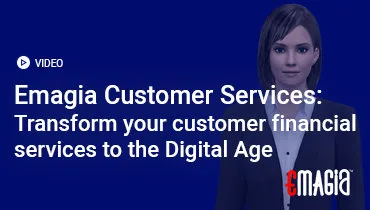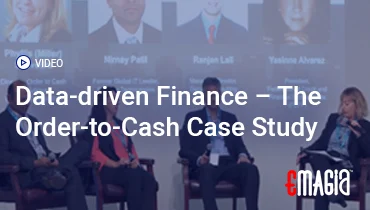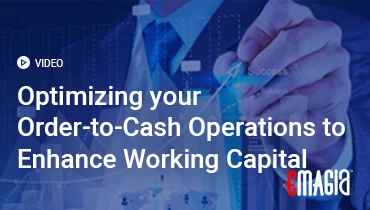Automation in credit risk management refers to leveraging advanced technologies such as AI, machine learning, and robotic process automation (RPA) to streamline and optimize risk evaluation processes. As the financial ecosystem becomes more complex, automation helps businesses remain agile, accurate, and compliant. This article explores the four primary benefits of credit risk automation and how modern platforms like Emagia are transforming this space.
2. Benefit 1: Enhanced Efficiency and Productivity
Automation allows companies to streamline routine processes like data collection, credit scoring, document management, and customer communications. These tasks can be performed much faster, with minimal manual intervention, increasing productivity and scaling operations efficiently.
2.1 Data Gathering and Validation
Automated tools integrate with internal and external data sources to validate financial, legal, and behavioral data for credit applicants in real time.
2.2 Automated Credit Scoring and Rule-Based Decisions
Rule engines automatically assess creditworthiness, applying predefined logic and minimizing manual interpretation errors.
2.3 Monitoring and Alerting Across Portfolios
Automation provides real-time risk tracking and alert systems for early signs of default or deterioration.
2.4 Efficiency Metrics and KPIs
Businesses can measure improvements in turnaround time, staff productivity, and reduced operational costs using clear automation KPIs.
3. Benefit 2: Improved Accuracy and Risk Mitigation
Automated systems reduce human errors, deliver consistent outputs, and mitigate financial risk through advanced analytics.
3.1 Control Over Data Accuracy
Automation minimizes data-entry errors and ensures accurate inputs for decision-making processes.
3.2 Rule-Based Decision Consistency
Every applicant is evaluated using the same parameters, eliminating bias and maintaining objectivity.
3.3 Real-Time Alerts on Risk Thresholds
Automated systems monitor accounts and trigger alerts when risk thresholds are crossed.
3.4 Improved Portfolio Quality
Automation supports a healthier portfolio by accurately filtering high-risk customers and highlighting opportunities.
4. Benefit 3: Faster Decision-Making and Risk Insights
With real-time processing and predictive analytics, automation accelerates credit decisions and generates deeper insights into risk exposure.
4.1 Real-Time Credit Scoring
Automated credit scoring engines evaluate applications instantly, supporting fast approvals and rejections.
4.2 Predictive Default Models
By analyzing borrower behavior and payment trends, machine learning algorithms estimate the risk of default with greater accuracy.
4.3 Decision Latency Reduction
Automation removes delays caused by manual processing and approval hierarchies.
4.4 Customer Experience Gains
Accelerated processing enhances the customer experience, leading to higher satisfaction, stronger retention, and increased loyalty.
5. Benefit 4: Enhanced Compliance, Transparency & Auditability
Automation helps maintain compliance with regulatory standards by embedding rules, creating audit trails, and supporting explainable decision-making.
5.1 Built-In Compliance Frameworks
Systems automatically apply regulatory requirements, reducing the risk of non-compliance.
5.2 End-to-End Auditable Workflows
Automated workflows are traceable, allowing auditors to review every step of the credit lifecycle.
5.3 Interpretability of ML Models
Explainable AI ensures credit decisions can be justified to internal and external stakeholders.
5.4 Regulatory Readiness
With consistent documentation and transparency, organizations are always prepared for audits and reviews.
6. Beyond the Top 4 Benefits: Additional Gains
Beyond the four key benefits, automation offers scalable growth, improved customer trust, and the ability to derive actionable insights from vast datasets.
7. Core Technologies Driving Automation
Technologies such as RPA, machine learning, decision engines, and XAI form the backbone of automation in credit risk management.
8. Implementation Challenges & Mitigation Strategies
Challenges like data silos, lack of training, and regulatory complexity can hinder adoption. These can be addressed through phased implementation, data governance, and cross-functional collaboration.
9. How Emagia Transforms and Accelerates Credit Risk Automation for Your Business
Emagia offers an end-to-end digital credit management solution that combines AI, analytics, and automation to revolutionize credit risk processes.
- AI-powered document processing and real-time credit decisioning
- Predictive insights and configurable scoring models
- Automated alerts and monitoring for early risk detection
- Compliance tools and audit-ready workflows
- Low-code integration with ERP systems
Organizations using Emagia report significant reductions in DSO, improved accuracy, and stronger financial governance.
10. Best Practices for a Successful Automation Journey
Success lies in a gradual, strategic rollout: audit your current processes, start small, train your team, and scale based on learnings.
11. Future Trends in Credit Risk Automation
The future lies in generative AI, adaptive decisioning, real-time embedded risk models, and AI-human hybrid models for judgment calls.
Frequently Asked Questions
What are the most impactful automation use cases in credit risk management?
Automation shines in areas like credit scoring, risk monitoring, document processing, and compliance reporting.
How does automation reduce errors and compliance risks?
By applying consistent rules and creating audit trails, automation eliminates manual errors and ensures transparency.
Can machine learning models in automation be explained to regulators?
Yes, through explainable AI frameworks that offer traceability and reasoning for every automated decision.
What are common data quality challenges in automation?
Poor data integration, outdated information, and inconsistencies across sources can impact automation effectiveness.
How do I start automating credit risk in my organization?
Begin with a data audit, choose a scalable platform, train your team, and automate one workflow at a time.
How does Emagia support explainable AI and auditability?
Emagia provides clear audit logs, decision histories, and explainable ML models to support transparency and compliance.



